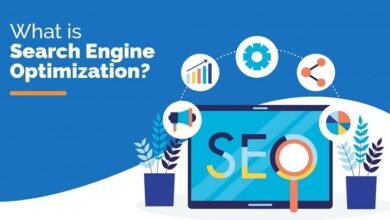Unlocking the Power of Email Marketing: A Comprehensive Guide

Introduction
Email marketing remains a cornerstone of digital strategy, offering unmatched return on investment and engagement rates. By understanding the fundamentals and implementing strategic campaigns, businesses can significantly enhance their communication and sales efforts. This guide delves into every aspect of email marketing, ensuring you have the tools needed to launch successful campaigns.
What is Email Marketing?
Email marketing is a powerful tool for businesses to reach out directly to customers and prospects. It involves sending targeted messages to a list of subscribers to promote products, services, or convey important information. This form of marketing is highly customizable and measurable, making it essential for customer engagement and retention.
Building Your Email List
The foundation of successful email marketing is a robust email list. This section covers the strategies for building your list, including using lead magnets, sign-up forms on your website, and promoting subscription via social media and other digital platforms. It’s vital to grow your list organically to ensure higher engagement rates.
Crafting Compelling Email Content
Creating engaging content is key to email marketing success. This involves understanding your audience’s interests and needs and crafting messages that resonate with them. Learn how to write compelling subject lines, use persuasive language, and include strong calls-to-action (CTAs) to increase open rates and conversions.
Designing Your Emails
The design of your emails plays a crucial role in how they are perceived. This section explains how to design visually appealing and mobile-friendly emails that encourage readers to engage with your content. From using templates to understanding the basics of HTML emails, you’ll find all the necessary tips to make your emails stand out.
Segmentation and Personalization
To maximize the effectiveness of email marketing, segmentation and personalization are key. By segmenting your audience based on their behavior and demographics, and personalizing emails to meet their individual needs, you can greatly increase the relevance and effectiveness of your campaigns.
Automation Tools
Email marketing can be highly automated with the right tools. This section reviews the top email marketing platforms that offer automation features like triggered emails, autoresponders, and scheduled campaigns. Automation helps maintain consistent communication with your audience while saving time and resources.
Testing and Optimization
Testing different aspects of your email marketing campaigns is essential to understand what works best. Learn about A/B testing, analytics tools, and key performance indicators (KPIs) to track such as open rates, click-through rates, and conversion rates. This data will help you optimize future emails for better performance.
Legal Compliance
Staying compliant with email marketing laws and regulations is crucial. This includes understanding the CAN-SPAM Act, GDPR, and other relevant legislation that affects how you can collect, use, and store subscriber information. Ensuring compliance not only protects your business but also builds trust with your subscribers.
Integrating Email with Other Marketing Strategies
Email marketing should not stand alone. Integrating it with other marketing strategies such as social media, content marketing, and PPC can amplify your overall marketing impact. Learn how to create a cohesive strategy that leverages the strengths of each channel.
Future Trends in Email Marketing
As technology evolves, so too does email marketing. This section explores upcoming trends like artificial intelligence, machine learning in personalization, interactive emails, and the increasing importance of privacy and data security in email practices.
Conclusion
Email marketing is an indispensable part of a comprehensive digital marketing strategy. By leveraging the power of personalized, well-crafted emails, marketers can create meaningful connections and drive significant business results. Always remember to adapt to emerging trends and continuously optimize your strategies for the best outcomes.
FAQs
Q1: How often should I send marketing emails to my subscribers?
Frequency should be based on your audience’s preferences and engagement levels. Regular testing and feedback can help determine the ideal frequency.
Q2: What is the best day and time to send emails?
This varies by audience and industry. Generally, mid-week mornings are effective, but testing is necessary to find what works best for your subscribers.
Q3: How can I improve my email open rates?
Focus on crafting compelling subject lines, segmenting your audience, and personalizing content to increase relevance and interest.
Q4: What should I do if my email engagement is declining?
Re-evaluate your content, design, and subscriber list health. Consider re-engaging inactive subscribers with a targeted campaign and refreshing your email design and content.
Q5: Is email marketing still effective in 2024?
Absolutely. Despite the rise of other digital marketing channels, email continues to offer one of the highest ROI, making it a crucial tool for marketers.




